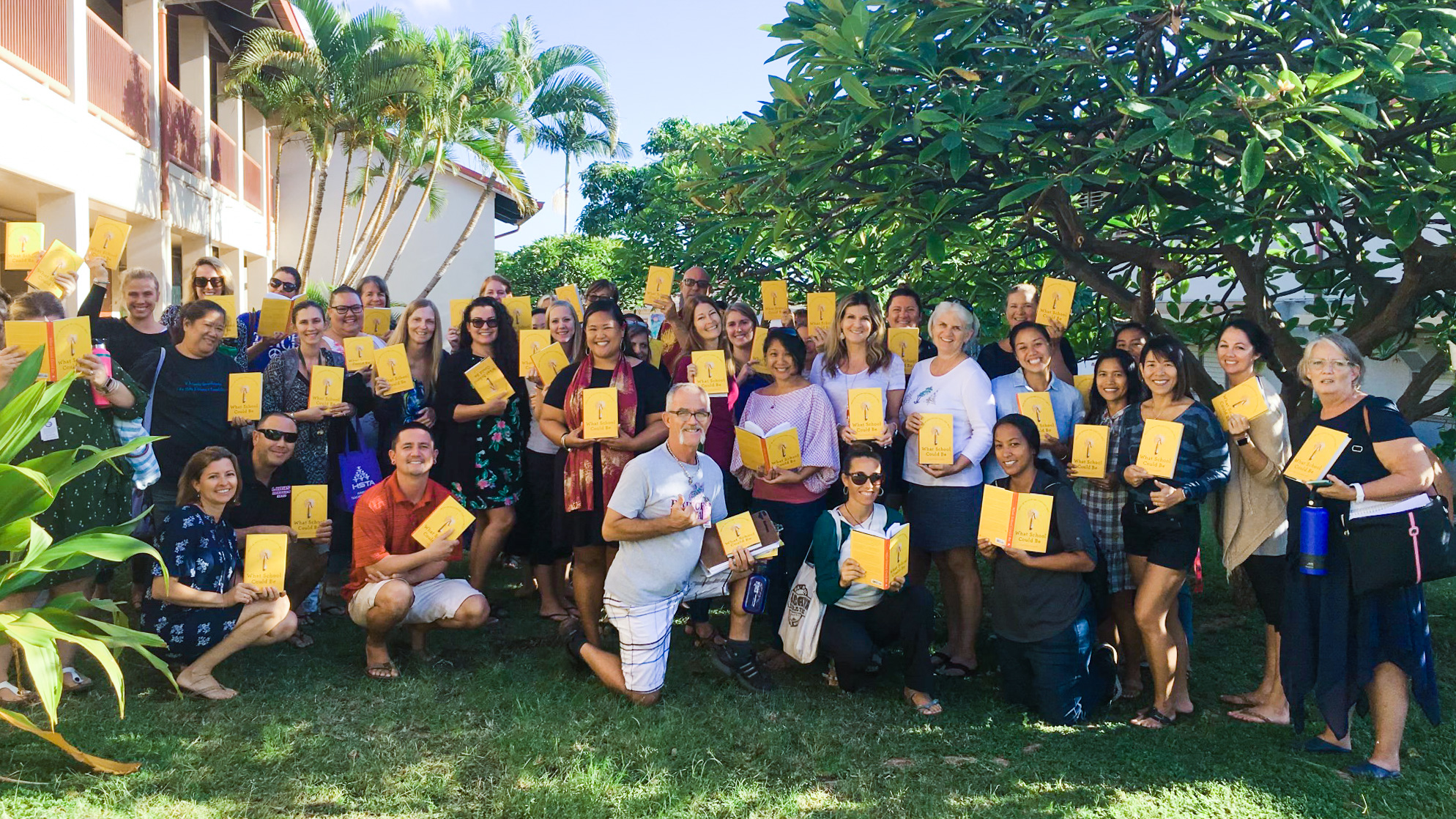The group focuses on student-driven learning, real-world challenges
Posted: September 2, 2022
Hawaiʻi educators have a new virtual place to gather to participate in collective conversations to improve education for Hawaiʻi’s keiki over the next 25 years. The What School Could Be Hawaiʻi Group began in August and plans to develop a community that focuses on student-driven learning, real-world challenges, assessments for deeper learning, along with caring and connected communities.
The Hawaiʻi group is part of the What School Could Be global online community, which, after just a year and a half, has more than 8,000 members worldwide. The majority of them are in the United States and the third largest U.S. contingent is composed of educators in the islands. To join, go to Community.WhatSchoolCouldBe.org or install the What School Could Be app on your mobile device. Once you’ve joined the community, you can tap on Groups in the main menu and request to join the Hawaiʻi group.
Entrepreneur and education change agent Ted Dintersmith founded the What School Could Be movement based on the book he wrote by the same name, which devoted a chapter to schools in Hawaiʻi. Dintersmith also created an online resource for educators and education leaders called the Innovation Playlist, which is full of free resources.
Josh Reppun, who hosts the “What School Could Be Podcast,” said, “Imagine that we can tap into a potentially unlimited number of actions including deeper learning professional development, panel discussions, seminars, symposiums, speaker series, short courses, film screenings, podcast discussions, readings by educators and much more.”
All of these resources and the What Schools Could Be global online community are free to educators and education leaders.
“The formation of this Hawaiʻi group solves a key issue within the What School Could Be Global Online Community — time zones and how to provide activities for Hawaiʻi, educators at times best for them,” said Reppun, a former history, Hawaiian studies and economics teacher who grew up in Kāneʻohe and lives in East Honolulu.
“In Hawaiʻi, we have our own place and cultural themes rich for exploration. We also hope the work of this group will result in the exporting of Hawaiʻi’s unique contributions to the global conversation around what school could be,” Reppun added.
What School Could Be founder Dintersmith served as executive producer of the acclaimed documentary about education in America titled “Most Likely to Succeed.” Dintersmith traveled to all 50 states to screen the film and speak with educators, parents, and community members about ways to improve education. His final stop, Hawaiʻi, in May of 2016, proved to him that the 50th state can be a model to the nation and the world of innovation in education.
Dintersmith will attend the 14th annual Schools of the Future Conference in Hawaiʻi Oct. 20–21. After two years of virtual sessions because of the pandemic, the conference is returning to an in-person meeting this year at the Hawaiʻi Convention Center. Click here for more information and to register. Thousands of public school educators and leaders have attended and presented at this conference over the past 13 years. This year’s conference will feature National Public Radio’s StoryCorps and the Choose Love Movement.
The National Education Association honored Dintersmith as its Friend of Education in 2018. In introducing Dintersmith when he accepted the award, former NEA President Lily Eskelsen Garcia said, “He believes every student, everywhere, deserves the opportunity to succeed and that we should prepare our students for life, not standardized tests. He values the voices of educators who speak up for student-centered, teacher-led practices and policies.”
Featured photo: Teachers and staff at Princess Nāhiʻenaʻena Elementary on Maui received free copies of the book “What School Could Be” in 2018.

